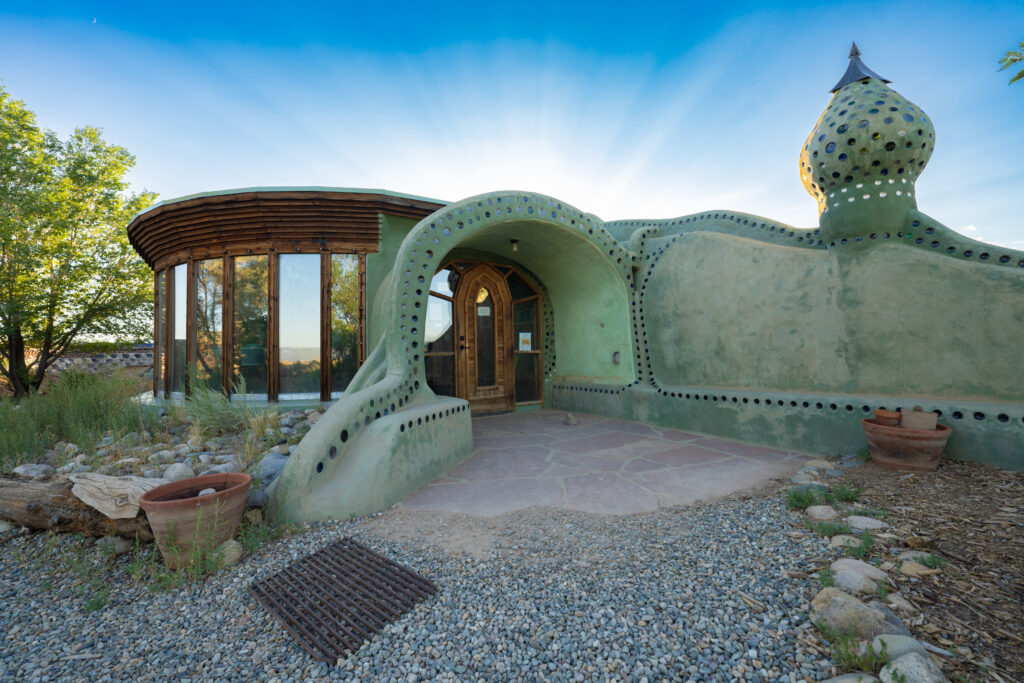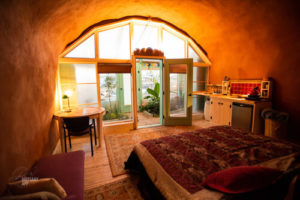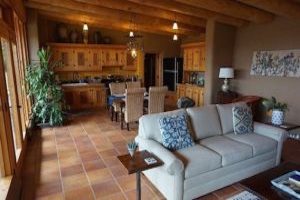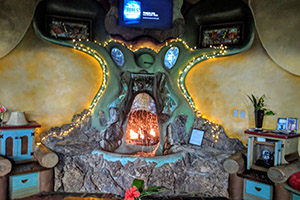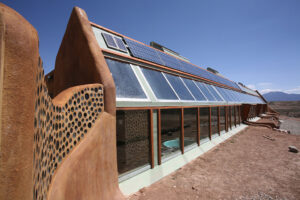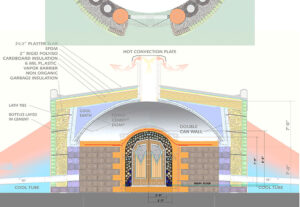Electricity free cooling based on ancient, global principles.
These in-ground PVC cooling tubes are also known as air tubes, earth air tubes, a ground-coupled heat exchanger, an earth-air heat exchanger, thermal labyrinth, heat recovery ventilation, geothermal energy tubes, sustainability tubes, or a number of other terms.
Cooling tubes are an efficient way to cool a building using natural convection and thermal mass principles. They require no pumps or fans, and are completely passive (no moving parts). This also means no electricity bill to “run” them, saving the building costs for the lifetime of the building, which keeps money in your pocket, and keeps your carbon footprint down. This is both natural cooling, and green cooling, simultaneously, and the principles take advantage of what nature already knows how to do.
Earth tubes work by harnessing what nature provides us naturally, utilizing simple principles that allow the ambient air temperature to be cooled by at least 10 or up to 20 degrees Fahrenheit, depending on energy efficiency of the building itself. These earth-tubes work great in humid climates and they work in arid climates as well. While outside it is 98 degrees F, inside can be a cool 78 degrees F or lower.
Since they last for the lifetime of the building (some have been going for 25+ years without any problems), and use no electricity, they can replace, or nearly replace any evaporative cooler (swamp cooler or Master-cool) or full size air conditioning unit (or several window air conditioners), depending on the building, its design and location.

Earth tubes remove water from the air.
The air entering the cooling tube from the outside during the summer is very warm, hot even. Remember, hot moves to cold. There is a natural convection happening that draws the warm, outside air into the cooling tube.
As the warm/hot air moves in the cooling tube toward the building’s interior, it is surrounded by a giant amount of thermal mass, bermed and compacted. All of this thermal mass draws the warm/hot temperature energy out of the air and into itself, as hot moves to cold.
The warm/hot temperature energy can move easily through the wall of the cooling tubes, but the water vapor inside of the air cannot, so it gets stuck on the inside walls of the cooling tubes and flows down and out of the cooling tubes.
The warm/hot air is now cool air and continues to move in the cooling tubes toward and into the building’s interior, cooling the ambient air temperature. The natural convection of the building has the air continuously moving in from the cooling tubes and out high through skylights.
There are small holes drilled into the bottoms (only) of tubes where the condensation drains into a gravel bed. In some designs non-perforated tubes are sloped away from the house and the condensate may go into a deep gravel pit, cistern for collection, or a drain sump may be used.
What are average soil temperatures year around?
It depends on where you live and what kind of winters and summers you have. Generally speaking, the deeper underground you go, the more stable the temperature. The air moving through the tubes in the earth at deeper depths, will follow those temperatures closely. Ambient temperature below the frost line, at an 8’ (2.5 m) depth may drop to 41 degrees F (5oC) in winter, and rise to around 65 F (18C) in North America. It is not usually logistically or economically feasible to place earth tubes below the 10’ (3 m) level.
Can cooling tubes be used in a humid climate?
The short answer is yes, although there appears to be some misconceptions floating around the Internet about whether or not earth tubes can work in humid climates. The misunderstandings come from poor overall designs. When it is 99% humidity outside and 99 degrees F (37oC), it is cool and dry 70 degrees F (21oC) inside the building – a 30 degree (F) difference. If designed properly, cooling tubes can absolutely be used in hot humid climates. If someone is having trouble and it is not a design problem, or user error, and if the heat and humidity levels are extremely high all of the time, then it could probably be remedied by adding extra cooling tubes.
History of earth-tubes
Earth-air tubes are based on very old technologies from the Middle East, including ancient Persia, with similar designs that the Romans used, etc. Waterways and underground canals or qanats diverted water through a tunnel system that ran underneath buildings.
A vertical shaft was put in the lowest room of the house or building to tap into the tunnel of water, and sometimes a tower or chimney (sometimes a solar chimney) was added to the top of the house. The air would get sucked up out of the underground tunnel channel, up through the rooms in the house, and then escape out of the chimney/tower. The result was a very cool house, and a basement style room that was even quite chilly (similar to a root cellar).
Cooling Tube style A/C is similar in design and very simple to make, and does not require any underground water source (in fact, it creates its own water, much like a window air conditioning unit does, which drips away into a gravel pit back into the earth), and is not nearly as labor intensive as qanats or yakhchals. However, where you live and what kind of soil you have, how deep your frost line is, what type of weather you have, etc., will determine just how hard (or easy) installing your cooling tubes will actually be.
Another consideration is whether you have a building you live in already that you want to add cooling tubes to, or if you are planning on building new and would like to incorporate these into the infrastructure of the house prior to building. Both or either can be done.
Cheap home air conditioning – how earth tubes work
When one or two windows ONLY (preferably high windows) is/are opened the hot air rises and escapes out that window(s). This will create a pressure difference inside the building, causing it to suck in air from the tubes. This is the natural process of convection working in your favor and why no pumps or fans or electric motors are needed.
The air going into the tubes from the outside, about 30 – 40 feet (sometimes 100′) away from the floor/wall registers, cools off due to the earth’s stable and cooler temperature, causing the water to condense out of the air, bringing the cooler dryer air into the house. It is a natural slow process and moves gently as an air exchange process all day long. Inside the house there will be a 10-20+ degree drop in temperature compared to outside.
You will need about one 10” diameter cooling tube per room, although there are methods to split off the tubes in a “Y” fashion, or even make larger tubes that break off into smaller tubes. There are even ways to make the tubes above ground and covered over with a mound of dirt, and are ideal for underground or earth bermed buildings. The cooling tubes can even be used to create water from thin air, which can be collected for use on plants and more.

